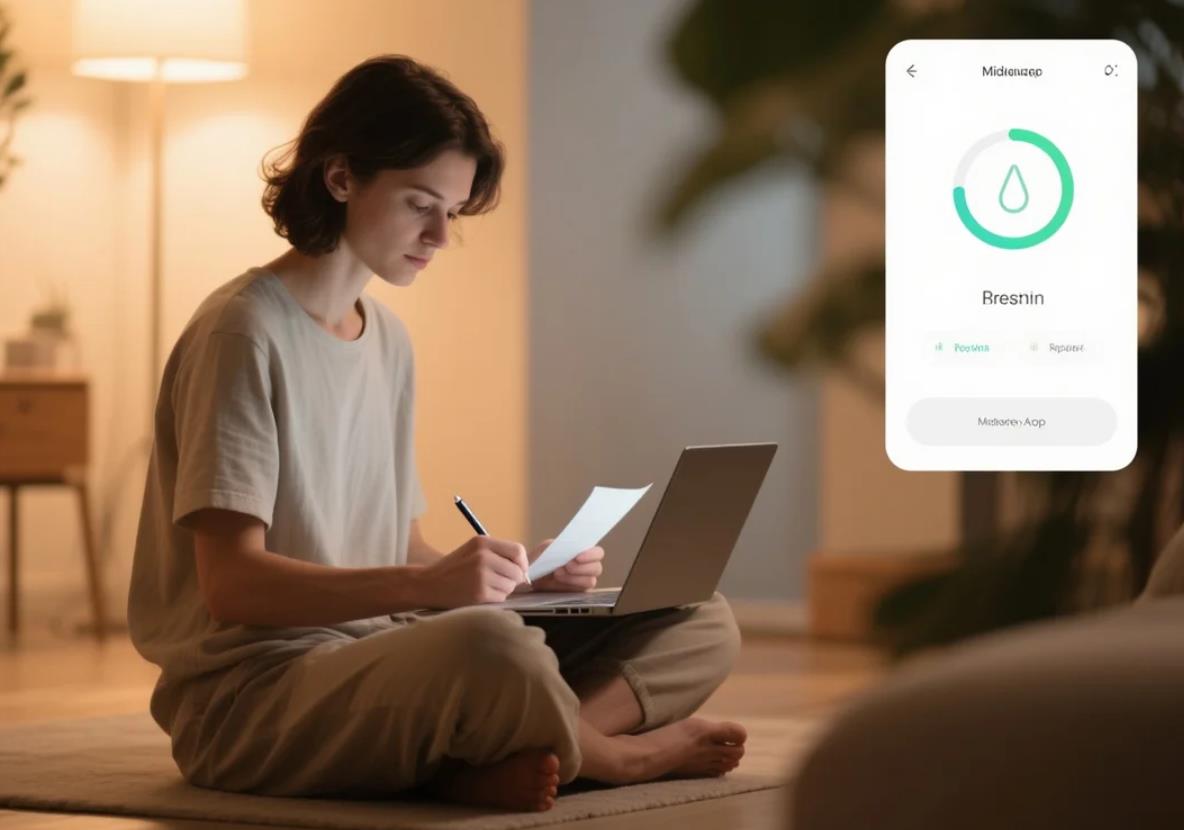In a world where deadlines, notifications, and endless to-do lists dominate our days, stress has become an unwelcome companion for many. Mindfulness-based stress reduction (MBSR), a practice rooted in cultivating present-moment awareness, offers a proven path to regain calm and clarity. But what if there was a way to combine the power of mindfulness with a forward-looking tool to create lasting change? Enter FutrLtr—your digital companion for blending mindfulness with intentional goal-setting, available at https://www.futureletter.org.
What is Mindfulness-Based Stress Reduction (MBSR)?
Developed by Jon Kabat-Zinn in the 1970s, MBSR teaches individuals to observe their thoughts, feelings, and bodily sensations without judgment. It’s not about eliminating stress but learning to respond to it with greater resilience. Core practices include:
- Body scans: Tuning into physical sensations to ground yourself in the present.
- Mindful breathing: Using the breath as an anchor during moments of chaos.
- Journaling: Reflecting on emotions to gain perspective.
For those searching “mindfulness based stress reduction techniques” or “how to manage stress with mindfulness,” MBSR offers a structured framework. Studies show it reduces activity in the brain’s amygdala (the stress center) and strengthens the prefrontal cortex, enhancing emotional regulation.

The Missing Link: Bridging Present Awareness with Future Vision
While MBSR focuses on the now, combining it with intentional future planning can amplify its benefits. This is where writing to your future self steps in—a practice that merges mindfulness’s present-moment focus with proactive goal-setting.
1. Anchor Your Present Self in Awareness
Before drafting your letter, spend 5 minutes in mindful breathing. Notice the rise and fall of your chest, the sensation of air in your nostrils. Ask yourself: How does stress show up in my body today? What emotions am I carrying that no longer serve me?
In your FutrLtr, describe these observations:“Today, my shoulders are tense, and my mind races with work deadlines. I notice frustration when I can’t control outcomes. But I also feel a quiet resolve to practice patience.”
This act of naming emotions—core to mindfulness—validates your experience and creates distance from stress, making it easier to address.
2. Set Intentions Rooted in Calm, Not Chaos
MBSR teaches us to respond, not react. Use your letter to define how you want to be in the future, rather than just what you want to achieve. For example:“I hope you wake up with a sense of purpose, not pressure. When challenges arise, I want you to pause, take three deep breaths, and ask: ‘What would my best self do here?’”
By focusing on internal states (e.g., “calm,” “resilient”) rather than external goals, you align with mindfulness principles.
3. Create a Time-Traveling Anchor for Reflection
Schedule your FutrLtr to arrive on a date when you anticipate stress (e.g., before a big project deadline or life transition). When future you reads it, the letter becomes a mindfulness prompt:
- Does my current behavior align with the calm I envisioned?
- What small practices (e.g., a 10-minute walk, journaling) helped me stay centered?
This reflective loop turns stress reduction into an ongoing journey, not a one-time fix—key for those searching “sustainable stress management strategies.”
Why FutrLtr Enhances Your Mindfulness Practice
FutrLtr isn’t just a letter-writing tool; it’s a mindfulness amplifier. Here’s how it complements MBSR:
- Intentional Pause:
In a world of instant gratification, drafting a letter forces you to slow down—a core mindfulness practice. The act of choosing words thoughtfully mirrors the MBSR principle of non-rushed awareness.
- Multisensory Engagement:
Add a soundtrack of your current favorite calming music or a photo of a place that brings you peace (e.g., a quiet beach, a cozy reading nook). These elements deepen the emotional connection to your present self, making the letter a more powerful stress-reducing tool.
- Gentle Accountability:
Unlike fleeting intentions, a scheduled letter holds you accountable to your mindfulness goals without the pressure of rigid deadlines. It’s a compassionate nudge: “I believe in your ability to choose calm—here’s how you wanted to do it.”
A Step-by-Step Guide to Your First Mindfulness Letter
- Start with a Mindful Moment:Light a candle, close your eyes, and take three deep breaths. Acknowledge any stress without judgment.
- Document Your Current State:Write about your physical sensations, dominant emotions, and one small thing you’re grateful for (e.g., “I’m grateful for the warm cup of tea in my hands—it’s a tiny moment of peace”).
- Craft a Mindful Vision:Describe the version of yourself you want to become. Use phrases like:“I hope you approach challenges with curiosity, not fear. When you feel overwhelmed, I want you to remember the strength you found in today’s small acts of self-care.”
- Schedule and Reflect:Set your letter to arrive in 3–6 months. When it does, use it as a prompt for a body scan or guided meditation, comparing your current state to the vision you created.
Conclusion: Stress Reduction as a Journey, Not a Destination
Mindfulness-based stress reduction is about cultivating a loving relationship with yourself—both the present and future versions. FutrLtr turns this practice into a tangible, actionable tool, allowing you to weave intention into every moment. Ready to start? Write a Letter to the Future to craft your first mindfulness letter and begin a journey where stress meets resilience, one thoughtful word at a time.